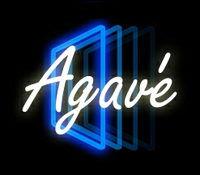AGAVE (Access Grid Autostereo Virtual Environment)
September 1st, 2000 - August 31st, 2005
Categories: Devices, Networking, Tele-Immersion, VR

About
AGAVE (pronounced agavay) is a panel-based, head-tracked, barrier-strip auto-stereographic display, where the viewer does not wear stereo glasses. AGAVE is designed to augment the Access Grid (AG), enabling collaborators to share 3D immersive content alongside 2D AG content (PPTs, video-conferencing).
AGAVE uses Varrier, a software technique we are developing with unique algorithms for generating and interleaving barrier-strip auto-stereo images in software. The goal of AGAVE is to develop a panel-based, head-tracked, barrier-strip, auto-stereographic display using a method optimized for real-time interactive virtual-reality systems. The Varrier computational method generates a virtual barrier screen in the VR scene that simulates a physical barrier screen to accomplish the required interleaving. The flexibility of this computational process allows more complicated barrier screens than the parallel opaque lines typically used in barrier-strip auto-stereography.
From the outset, we anticipated problems with mullions (borders around displays) interfering with the user experience. Conversations with panel manufacturers indicate that borderless panels are not planned for the near future. We proceeded to model and present the tiled-display design as a full-sized simulation in the CAVE. The virtual model included viewer-centered perspective renderings of selected CAVE applications. The simulation showed that mullions are less notable in a head-tracked context than without.
While there are optical methods to relay an image a few inches forward, which could be used to (mostly) eliminate the effects of the borders, such a device would not be useful for very close viewing (even non-stereo). We are investigating optical relays (tapers) to eliminate mullions; however, they are very expensive and available only in small sizes.
The first functional prototype consisted of a single LCD panel with a film-line screen glued to the front as an overlay. The line screens were fabricated by a print house (producing a pre-production print) and laminated on plastic at EVL. This prototype proved the concept, performed well in terms of stereo ghost suppression, and produced good ortho-stereo (correct depth). Other Varrier and lenticular systems compressed depth in order to produce acceptable images.
The construction of a second prototype, consisting of four LCD panels mounted side-by-side on stands, was fitted with the IS900 hybrid inertial sonic tracking system with lense-less glasses as a convenient mount for the head tracker. The highly sensitive tracking system was selected to allow us to isolate errors caused by the Varrier computational process from those caused by the tracking system itself.
The Varrier method has been largely proven in a single panel environment, and experimentation is now being extended to multiple panels. Major outstanding problems are automatic calibration and registration of line screens, and effects of errors in latency in head tracking. Tracking remains the most critical element, in terms of quality. The ultimate goal is to integrate camera-based, tetherless tracking.